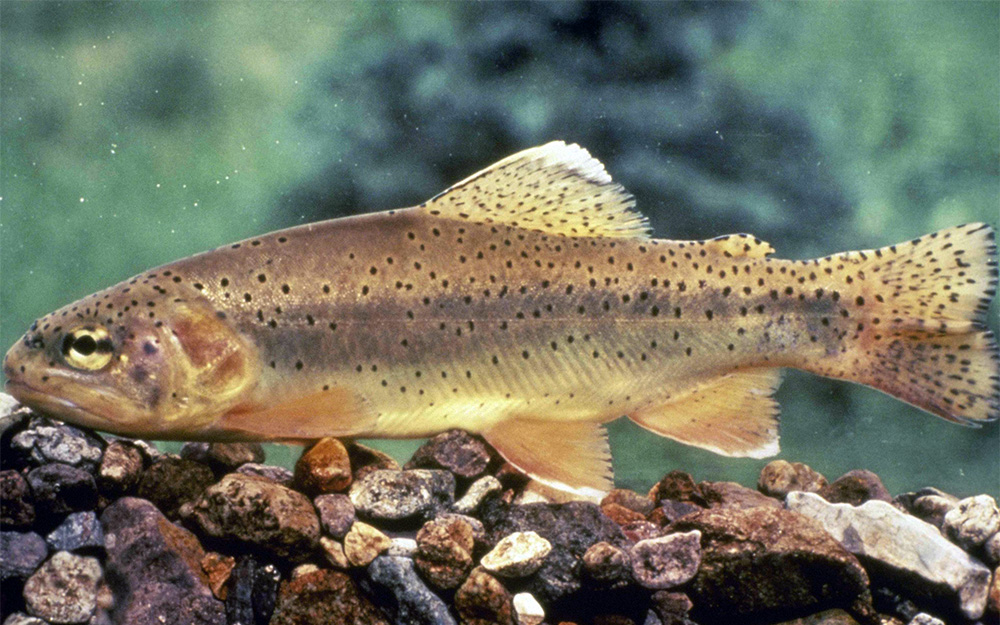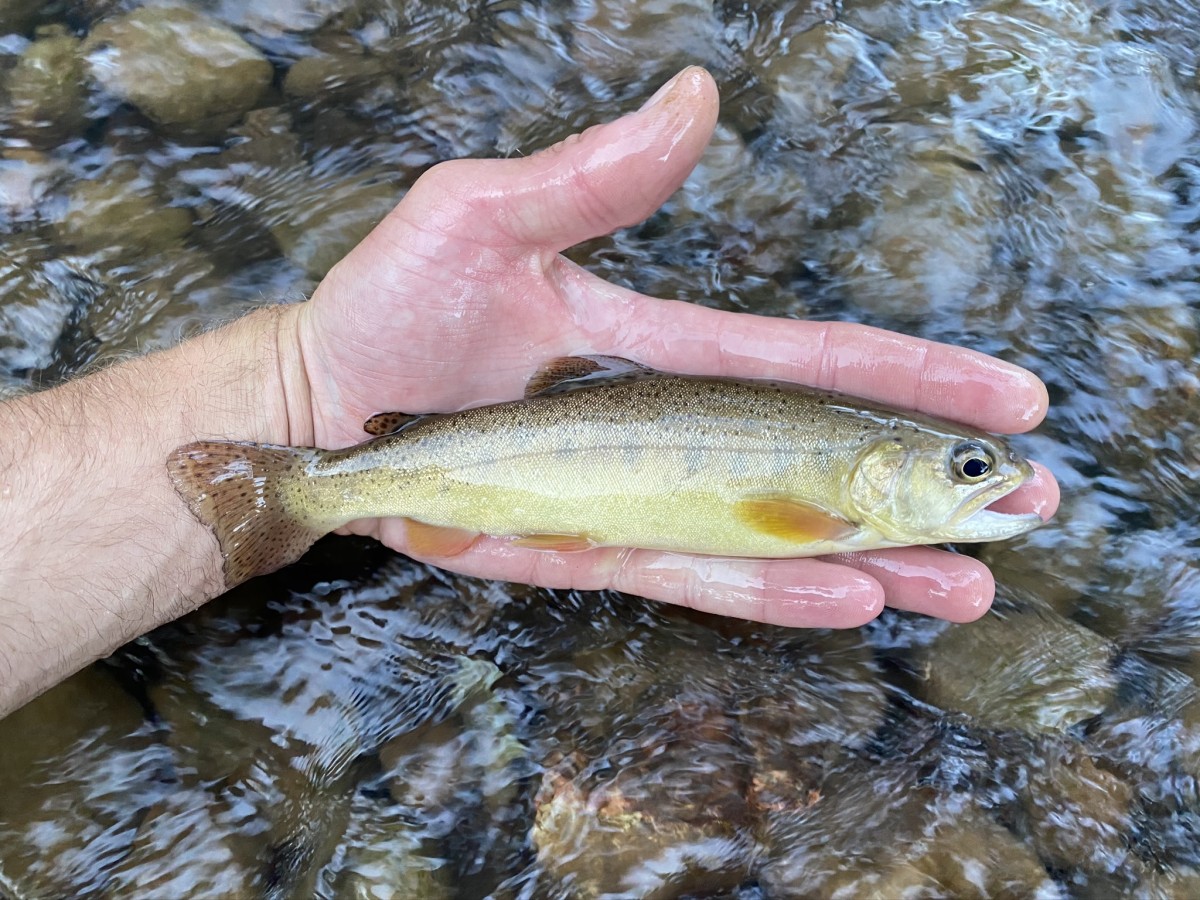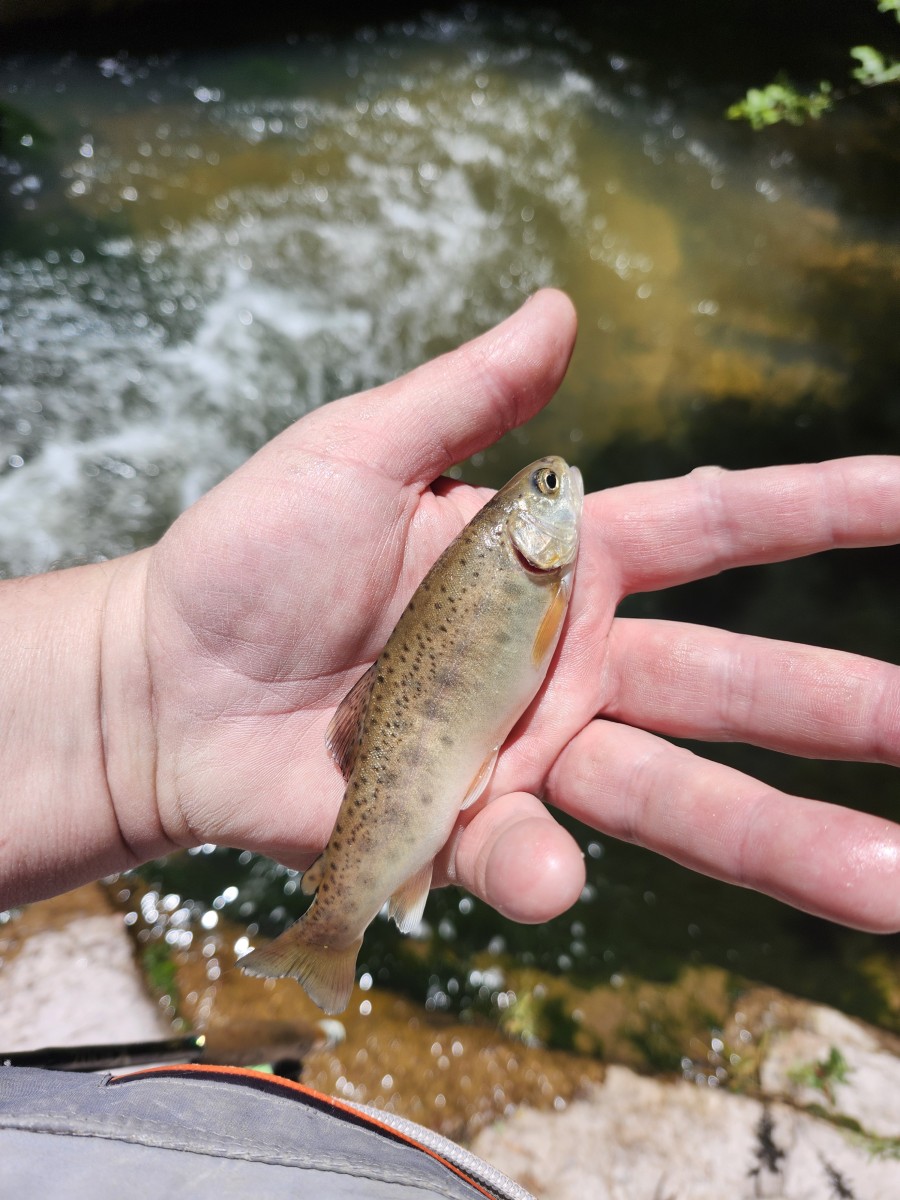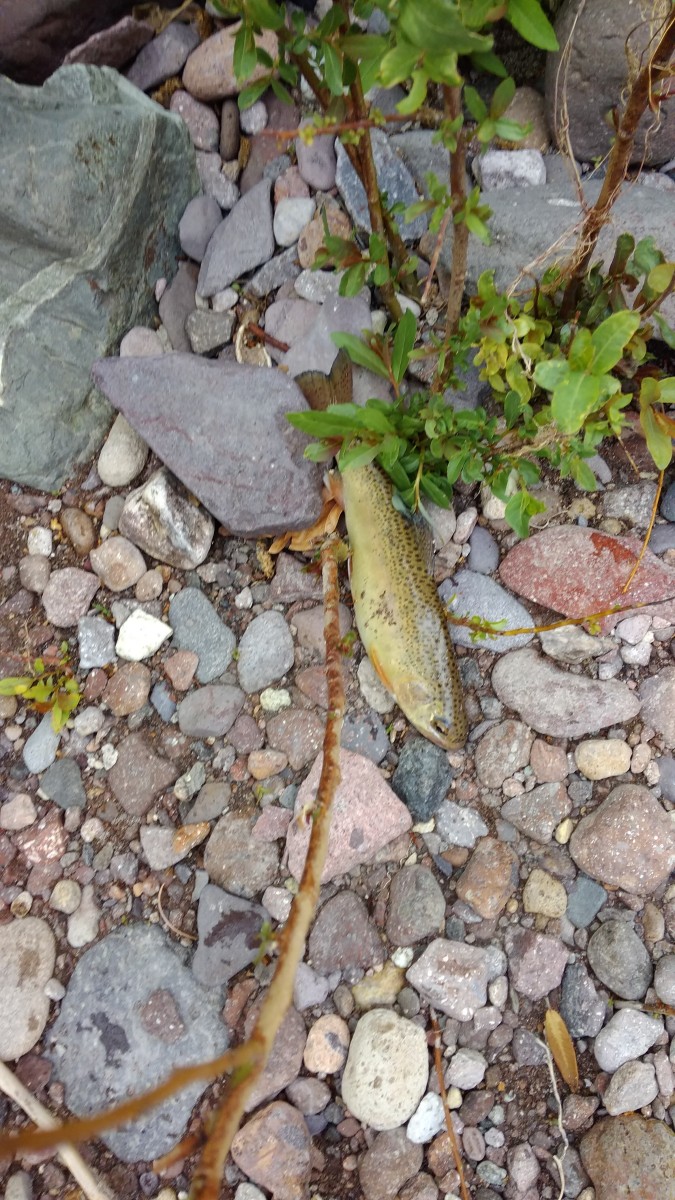Gila trout
(Oncorhynchus gilae)

Classification
General data
The Gila trout (Oncorhynchus gilae) is a species of salmonid, related to the rainbow trout, native to the Southwest United States.
Prior to 2006 the Gila trout was federally listed as endangered. In July 2006, after much work by the Game and Fish departments in New Mexico and Arizona, the US Forest Service and the US Fish and Wildlife Service, the Gila trout was down-listed to threatened, with a special provision called a 4d rule that will allow limited sport fishing – for the first time in nearly half a century. By the time the Gila trout was closed to fishing in the 1950s, its numbers and range were so depleted and so reduced this copper-colored trout simply wasn’t very accessible to anglers. As of 2011 there is fishing in both states for this fish.
The Gila trout is native to tributaries of the Gila River in Arizona and New Mexico. The Gila trout is found historically in the Verde and Agua Fria drainages in Arizona. A note in the archives of Aldo Leopold, dated 1923, contains anecdotal evidence of a native trout in Tonto Creek, AZ. Gila trout have persisted in five streams within the Gila National Forest, New Mexico, including: Iron, McKenna, and Spruce creeks in the Gila Wilderness Area, along with Main and South Diamond creeks in the Aldo Leopold Wilderness Area.
Gila trout have a yellow body, with black spots.
The average total length is about 30 cm (11.8 in); with maximum total length approximately 55 cm (21.7 in).
Gila trout are closely related to Apache trout. However, Apache trout can have a spot behind and in front of the pupil (eye) and big noticeable spots on the body whereas Gila trout are characterized by numerous small dark spots on the upper half of the body.
Gila trout can be found in small mountain water streams, and in confined pools. They are opportunistic feeders that feed on aquatic insects such as trichopterans, ephemeropterans, chironomids, and coleopterans, as well as small fishes.















